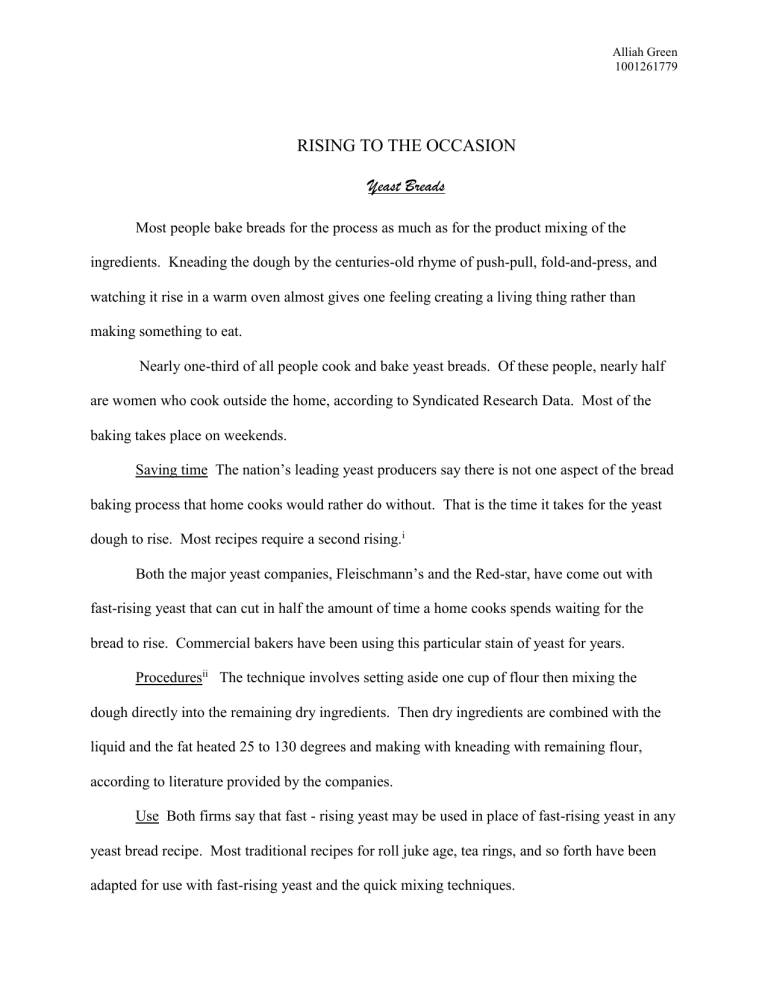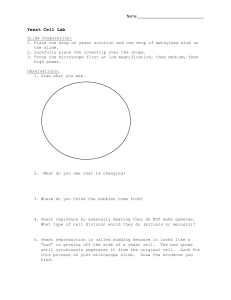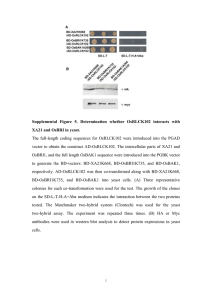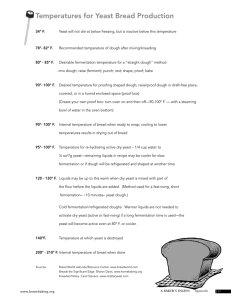
Alliah Green 1001261779 RISING TO THE OCCASION Yeast Breads Most people bake breads for the process as much as for the product mixing of the ingredients. Kneading the dough by the centuries-old rhyme of push-pull, fold-and-press, and watching it rise in a warm oven almost gives one feeling creating a living thing rather than making something to eat. Nearly one-third of all people cook and bake yeast breads. Of these people, nearly half are women who cook outside the home, according to Syndicated Research Data. Most of the baking takes place on weekends. Saving time The nation’s leading yeast producers say there is not one aspect of the bread baking process that home cooks would rather do without. That is the time it takes for the yeast dough to rise. Most recipes require a second rising.i Both the major yeast companies, Fleischmann’s and the Red-star, have come out with fast-rising yeast that can cut in half the amount of time a home cooks spends waiting for the bread to rise. Commercial bakers have been using this particular stain of yeast for years. Proceduresii The technique involves setting aside one cup of flour then mixing the dough directly into the remaining dry ingredients. Then dry ingredients are combined with the liquid and the fat heated 25 to 130 degrees and making with kneading with remaining flour, according to literature provided by the companies. Use Both firms say that fast - rising yeast may be used in place of fast-rising yeast in any yeast bread recipe. Most traditional recipes for roll juke age, tea rings, and so forth have been adapted for use with fast-rising yeast and the quick mixing techniques. Alliah Green 1001261779 Characteristics There are several differences between the regular yeast and the fast-rising varieties. Odor The fast-rising product gives off a more yeasty odors while foaming or rising foam. Unlike regular yeast, the fast-rising product will not foam while proofing or dehydrated in warm water unless a little sugar is added. Rising Time Fast-rising yeast rises more quickly in warm temperature but is also more sensitive to temperature extremes. Texture Breads made with fast-rising yeast have a slightly more open texture than those made with regular yeast. The resulting breads and rolls, however, do not appear to be significantly different from those made with regular yeast. i ii If the dough does not rise in the required time, then the texture of the bead will be cold. Ensure that procedure outlined in the accompanying literature is followed.




